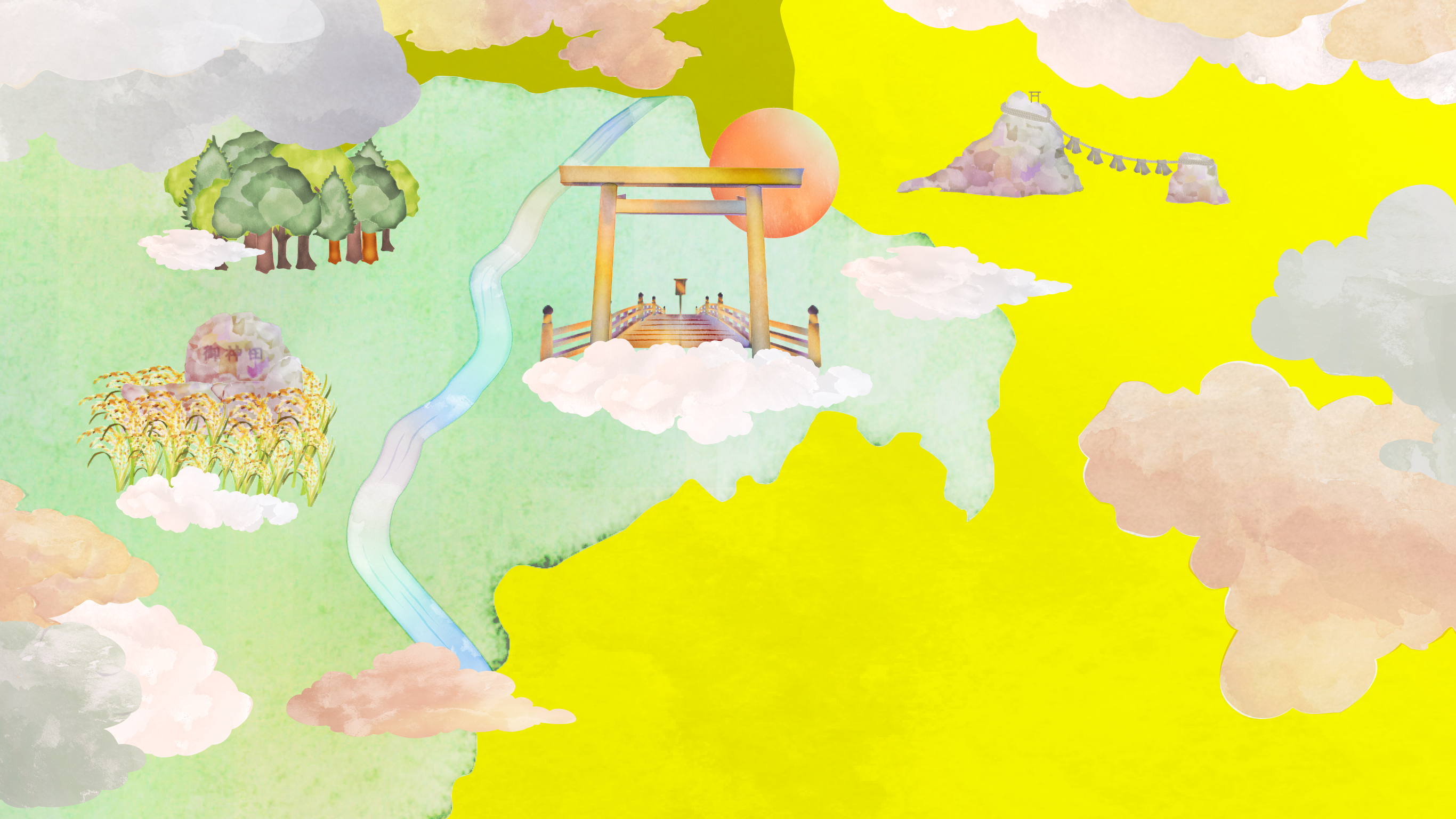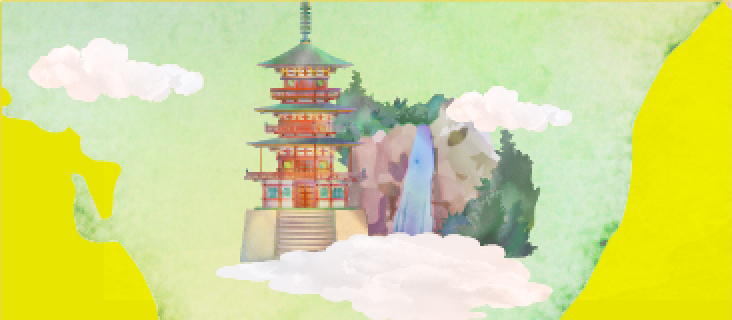Favorite of the Sun Goddess
"This is a place where waves from the everlasting land beyond the sea come. And this is a land of abundance. I want to stay here forever."
This is what the sun goddess said when she arrived at Ise about 2,000 years ago. Ise, which protrudes out from the eastern tip of the Kii Peninsula, is a flat, brightly lit place that stretches out towards the sea. This makes it an ideal place to worship the sun goddess Amaterasu-Omikami, and because of this, it has become a sacred place for Japanese people.
Amaterasu-Omikami is the deity who rules over Takamagahara, where the gods live. According to the Kojiki and Nihonshoki, the oldest historical books in Japan, when the godness sent her grandson Ninigi-no-Mikoto to earth, she gave him an ear of rice for humans to eat, and three sacred objects: a mirror, a sword, and a magatama. Regarding the mirror, she commanded –
“When you look at this, think that you are looking at me. Sleep with the mirror and keep it in your palace at all times.”
For this reason, the emperors who succeeded him also enshrined the mirror in their palaces.
However, during the reign of Emperor Sujin, a plague broke out and the people
suffered, so Amaterasu was moved to Kasanui-mura in Yamato (Nara Prefecture) to be enshrined in a better place. During the reign of the next Emperor Suinin, the imperial princess
Yamatohime-no-Mikoto traveled for a long, long time in search of an even better location.
Finally, she reached the upper reaches of a clear river called Isuzugawa. The
goddess whispered to Yamatohime-no-Mikoto.
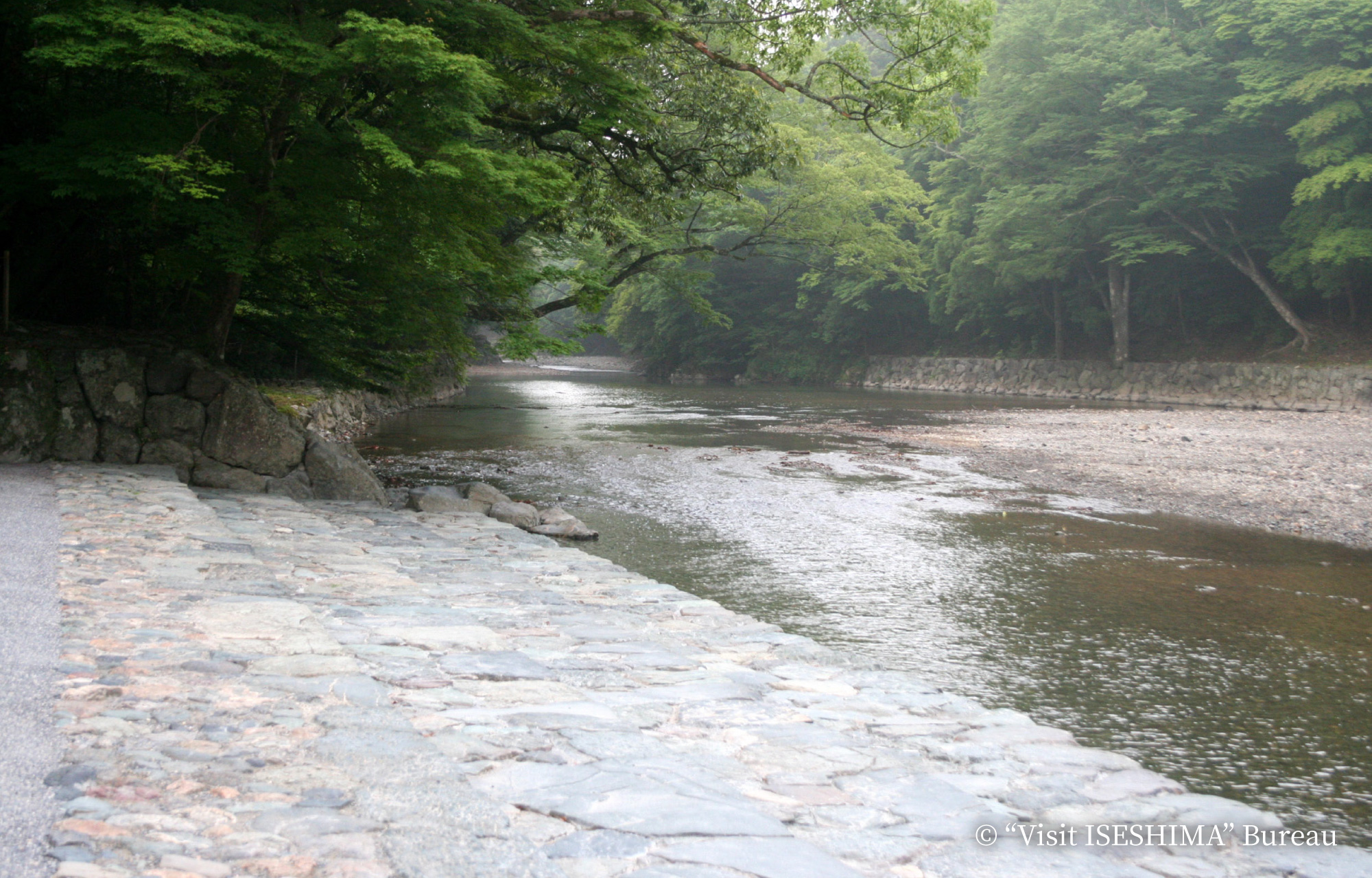
“I like it".
Finally, Amaterasu-Omikami was enshrined here, and this became the root of the present-day Ise Jingu. As the ancestral deity of the imperial family and the spiritual home of the Japanese people, the shrine has attracted a steady stream of worshippers throughout the ages.
Why did the goddess love this place? One thing is that the eastern tip of the Kii Peninsula is the closest to the rising sun, which is suitable for the Sun Goddess. Another, it faces Ise Bay, a land of abundant seafood from the sea and the mountains. Finally, it has beautiful scenery and a mild climate.
Futamiura, near Ise Jingu, is believed to be the beach where the sacred waves from beyond the sea come to rest, and there used to be a sacred stone called "Okitama Shinseki" offshore. It is said that a leading deity named Sarutahiko-Okami appeared here and led Princess Yamatohime-no-Mikoto to the Isuzu River. From ancient times, people who visited Ise Jingu first purified themselves by immersing themselves in the sea where this sacred stone was located. Unfortunately, the sacred stone sank into the sea during the great earthquake of the Edo period (1603-1867), but its shadow can still be seen from the beach at spring tide.
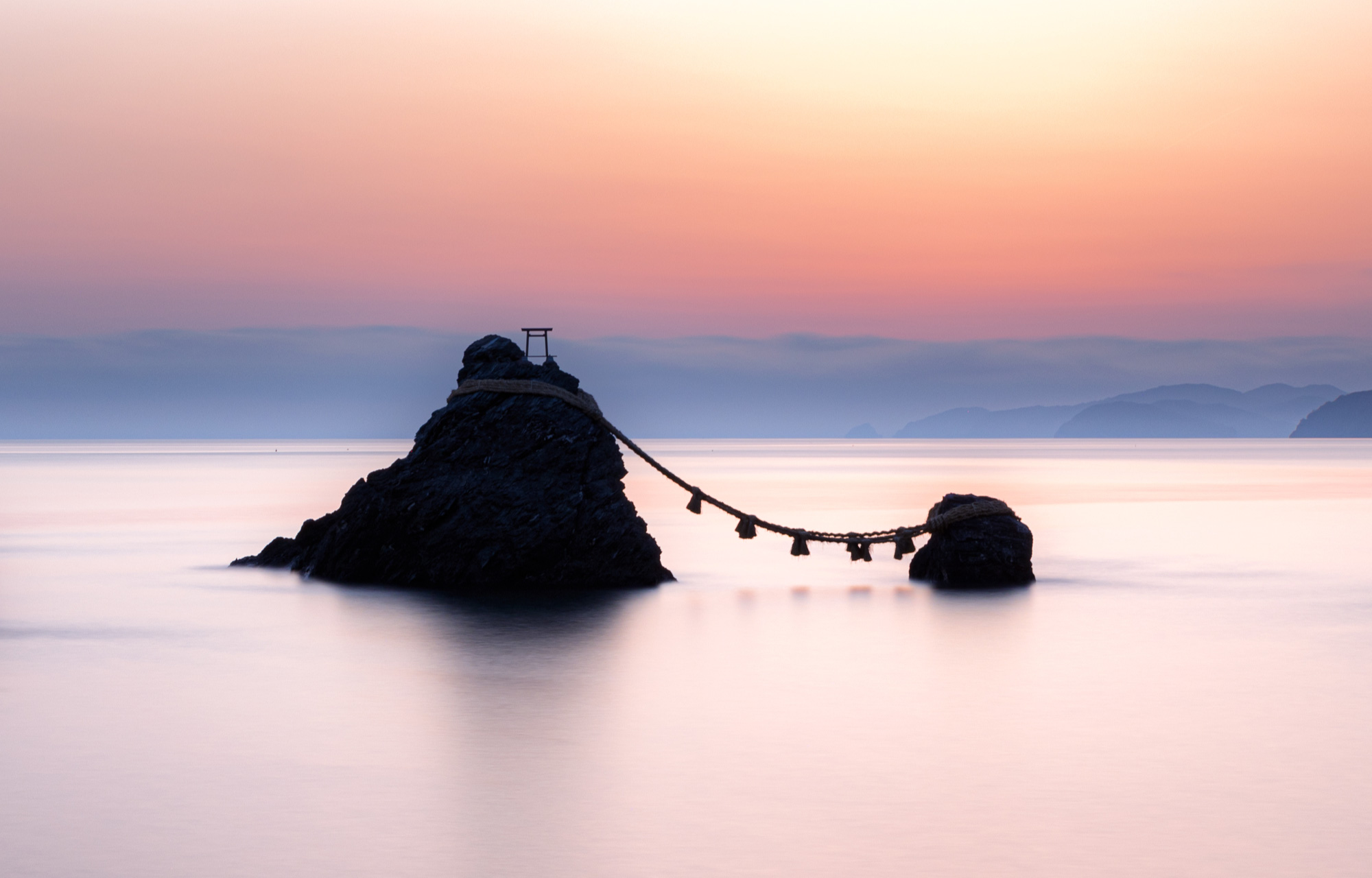
The torii (gateway to the sacred site) for worshipping the stone is called "Meoto Iwa(Married Couple Rocks)," which connects two rocks, one large and one small, with a shimenawa (sacred rope). It has been believed that beyond this natural torii gateway is the world of the gods. When the morning sun rises between the two rocks, we feel as if we have entered the world of the gods. Listen carefully on the beach of Futamiura. The sound of the waves coming and going announces the coming of the gods from the everlasting world.
Two Sanctuaries
The Ise Jingu consists of two main sanctuaries. Kotaijingu (Naiku), where Princess Yamatohime-no-Mikoto enshrined Amaterasu-Omikami on the banks of the Isuzu River, and
Toyo'uke-daijingu (Geku), where Toyo'uke-no-Omikami, the deity responsible for Amaterasu-Omikami's diet, is enshrined. It is said that the official way to visit the shrine is to
first pay homage to Geku before proceeding to Naiku.
About 500 years after Naiku was built, Amaterasu-Omikami appeared to Emperor Yuryaku in his dream.
She said, "It is very painful for me to be here alone. I cannot even eat my meals in peace. Please bring Toyo'uke-no-Omikami, the god who controls meals, to this place".
This was the inspiration for the birth of Geku. For this reason, the priests still make a fire and prepare meals twice a day, in the morning and evening, and offer them to the
gods in their dining hall, the Mikeden.
Geku is located in a bustling town about a 10-minute walk from Iseshi Station. Yet, once you pass through the torii gate, a cluster
of huge trees casts a cold shadow on the approach to the shrine, and the only sounds you can hear are birdsong, the rustling of trees, and people stepping on gravel. Although
this is a sacred place created by man over a long period of time, we feel as if we are surrounded by nature itself and praying to nature itself.

Naiku is located at the entrance to a sacred mountain called Kamijiyama. It is a 10-minute drive from Geku and is a sanctuary where one can finally immerse oneself in nature. A plain wood bridge over the clear stream of the Isuzu River gives notice to visitors, asking, "From here onward, you are in the world of the gods, OK?”. After passing the Ichino-torii (first shrine gate), there is a place where you can step out onto the bank of the Isuzu River on your right.
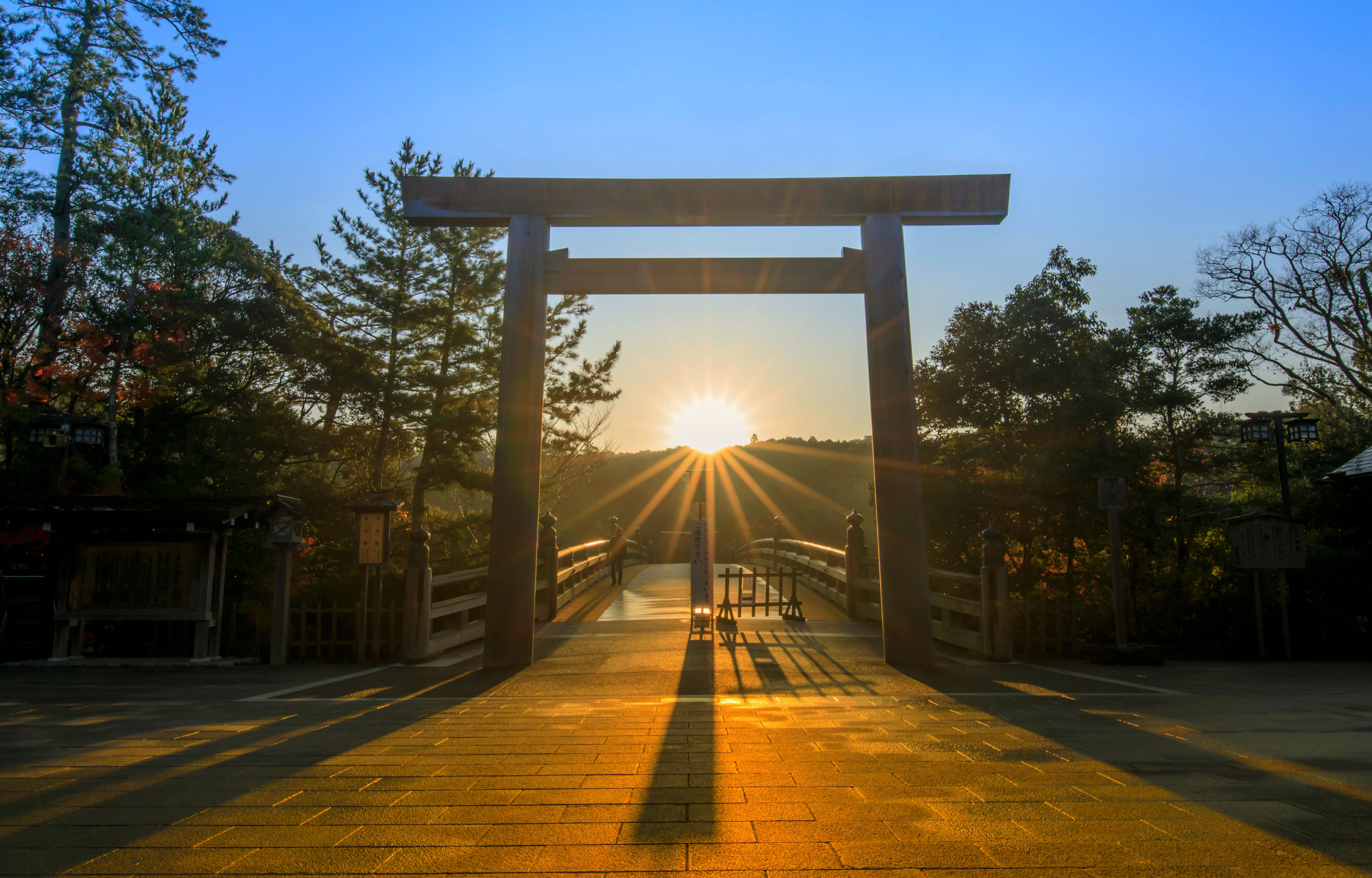
Here, called “Mitarashi”, visitors purify themselves by dipping their hands directly into the river water that has just gushed out from the mountain. The water is clear and cool
to the touch. A bridge, a river, a torii gate, and another torii gate. We repeatedly crossed over these "sacred devices" to purify ourselves. Finally, at the end of the stone
steps, we come to a shrine dedicated to Amaterasu-Omikami.
However, a white cloth is draped over the front of the shrine, and we are not allowed to look directly at the
shrine. We can only bow down with our hands together, feeling the breath of God. The white boulders in front of the shrine, the white costumes of the priests, and the white staff
swaying in the wind. If one were to ask me what the color of Ise is, I would answer, "the white of purity”.
This may come as a surprise to some, but every 20 years, the Ise Jingu is completely rebuilt, including the shrine pavilions and sacred treasures. It's called "Shikinen Sengu", and it's a regular moving of the gods. Twenty years seems like a very short period of time, and the cost is enormous, taking eight years to complete. There are various theories as to why the ceremony has continued for 1,300 years. First of all, the roof is made of cypress wood and the roof is made of Kaya, which is a traditional material that is easily damaged. It is also said that 20 years is the best time to carry on the traditional techniques of building traditional buildings and making sacred treasures. Above all, Japanese deities are thought to lose their spiritual power as they age, so they are required to be "always young”. It is said that the reason why festivals are held at shrines throughout Japan and the deities are brought to the "Otabisho" is to refresh the deities and revive their spiritual vigor. The ultimate form of this is the Shikinen Sengu, or ceremonial relocation of the shrine.
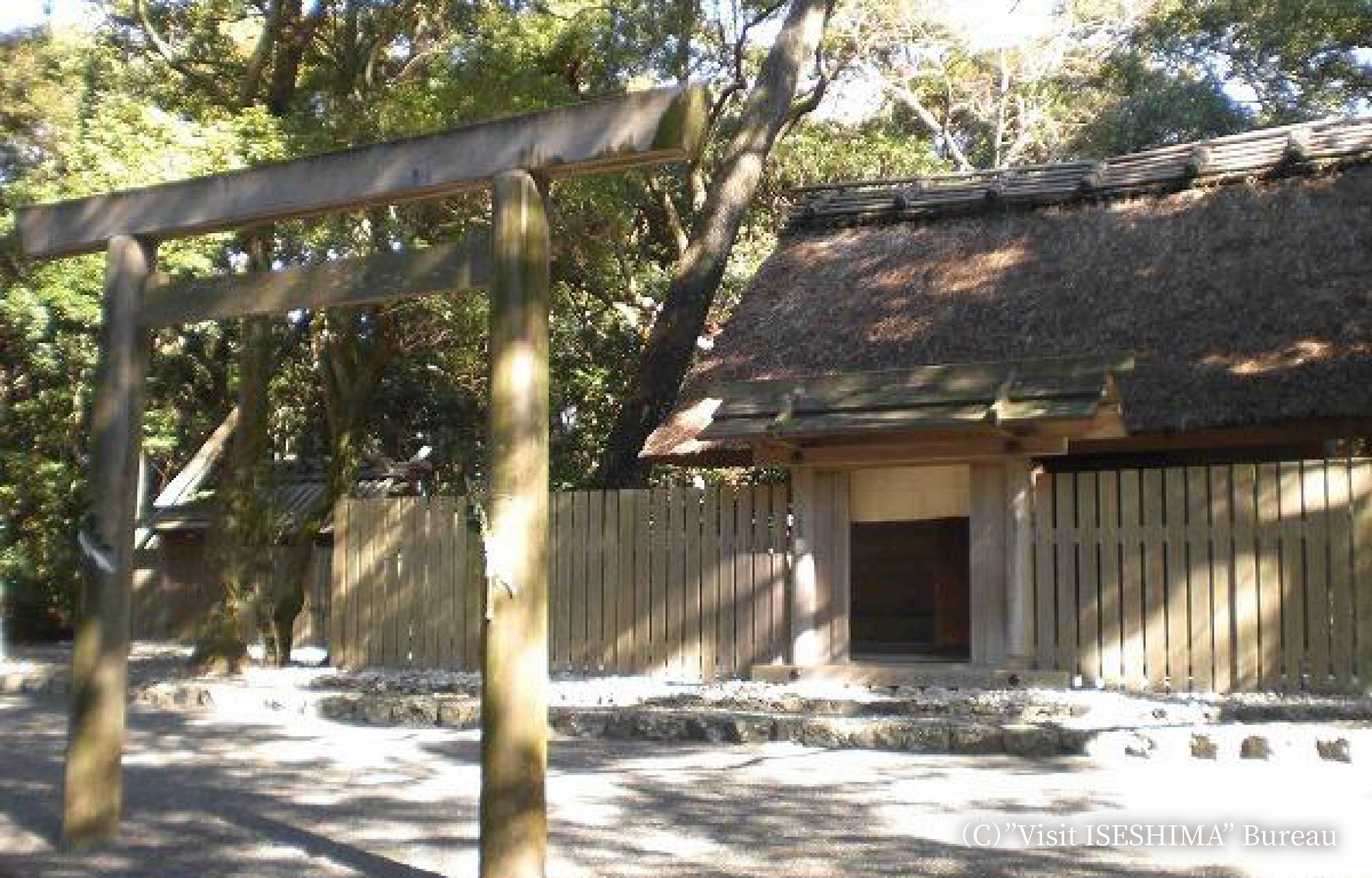
At Ise Jingu, a number of activities are carried out to keep the shrine in a state of constant renewal and the highest spiritual authority. For example, even the food offered to the gods is all made by the priests with the utmost purity. Rice is produced in Shinden (rice field of gods), located in the basin of the Isuzu River, and salt is made into solid salt in the Mishiodono Shrine after collecting salt water in Futamiura. Nearby is Jingu Misono, a field where vegetables and fruits are also grown, and everything is carefully prepared with cleanliness in mind. One can only imagine what the food for the gods must taste like, but only the gods know for sure.
Pilgrimage to Ise
Since Amaterasu-Omikami is considered the ancestral deity of the Imperial Family, the Imperial Family's devotion to Ise Jingu has been strong, and successive emperors have sent their daughters to Ise as "Saio" to serve the gods of Ise. Currently, emperors themselves go to Ise to visit the shrine. In the Edo period (1603~1867), when public safety was improved and roads were built, people from all over the country began to visit Ise Jingu.

Ise was a place of longing not only for the wealthy but also for the common people. This was due in part to the efforts of the lower-ranking priests of Ise Jingu, who traveled
around the country as "Onshi," or travel guides, to promote the shrine. Some people would visit the shrine alone, without telling their families or employers, and were allowed to
do so if they said, "I was visiting the shrine”. It seems that this was one of the reasons used by those who wanted to escape to somewhere other than here. During the Edo period,
there was a boom in the number of pilgrimages to Ise, with 3.62 million people coming to Ise in 50 days. The precincts of the shrine, which were supposed to be clean and fresh,
must have been filled with a great deal of noise on those occasions.
For Visiting Ise Jingu, they practiced a certain period of purification called Shojin by abstaining from
stale food. Once the worship was over, however, they were free to do as they pleased. One of the most enjoyable parts of the day was the "Shojin-Otoshi," where visitors enjoyed
elaborate dishes and sake.
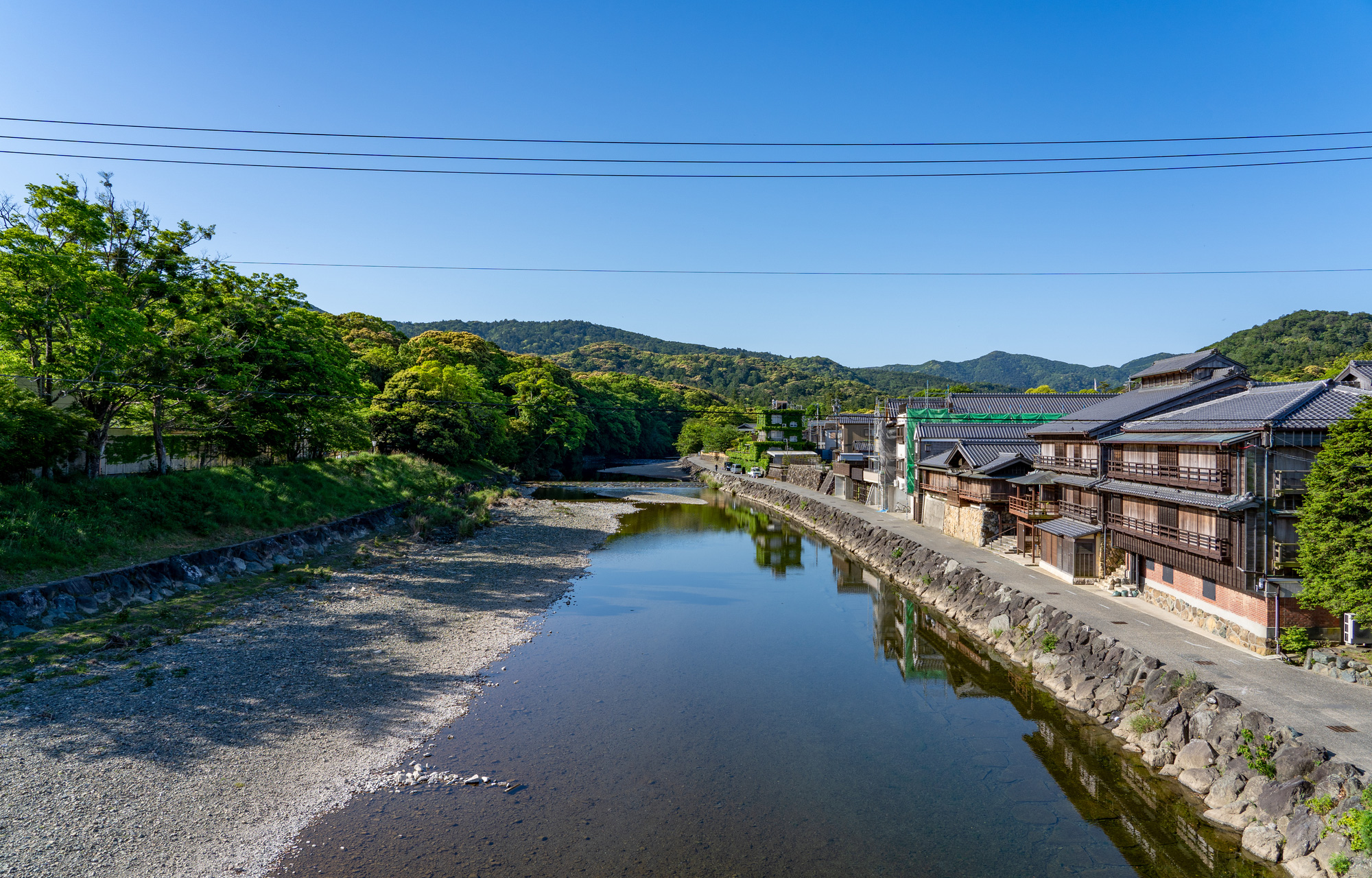
Today's worshippers, too, enjoy gourmet food after visiting the shrine. The stone-paved approach along the Isuzu River from the Uji Bridge at Naiku is called "Oharai-machi," and it retains the atmosphere of an old townscape, lined with souvenir shops and restaurants where visitors can enjoy the taste of Ise. Today's Ise souvenirs include Akafuku, a rice cake with an image of the flowing Isuzu River, seafood from Ise Bay, and pearl accessories, but in the Edo period there was a local song called Ise Ondo, which was a "souvenir that does not become luggage. The song spread throughout the country as visitors to Ise learned it at a feast for the "Shojin Otoshi," or "devotees off" and brought it back to their hometowns. The lyrics of the song have been passed down in various forms.
I want to go to Ise,
I want to see Iseji Route,
at least once in my life.
My country is far away from Ise.
I miss Ise.
I want to go there.
Ise Quiz QUIZ
Q: Something is being prepared next to the shrine pavilions for "Shikinen Sengu,"
a ceremony in which the pavilions are rebuilt every 20 years. Which is it?






